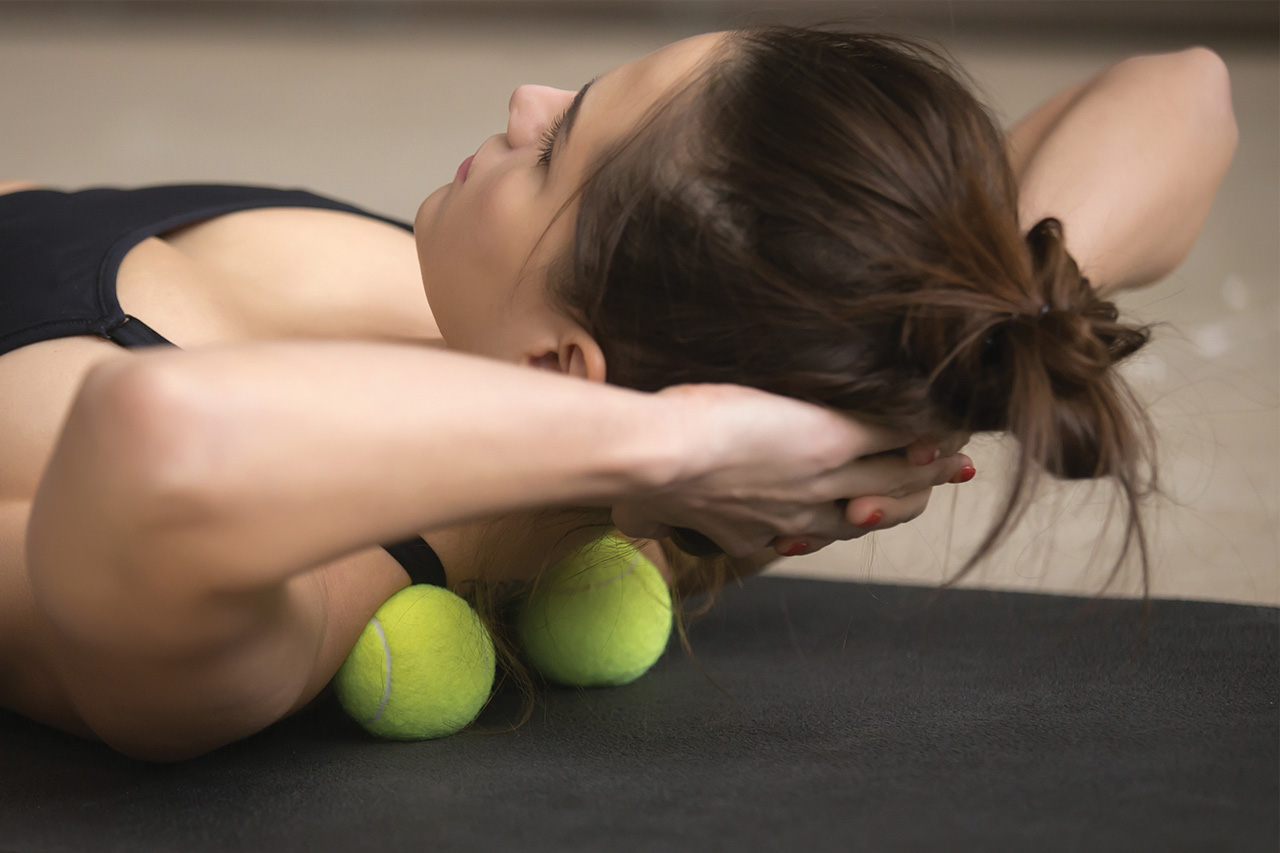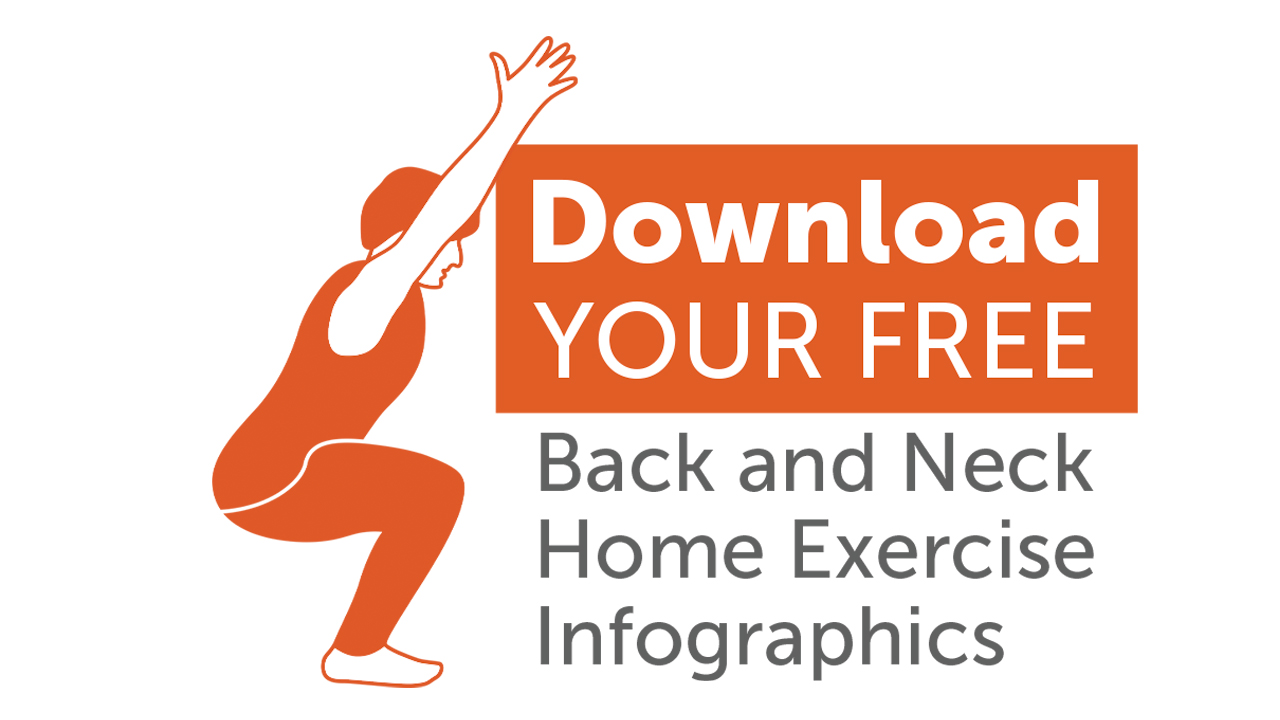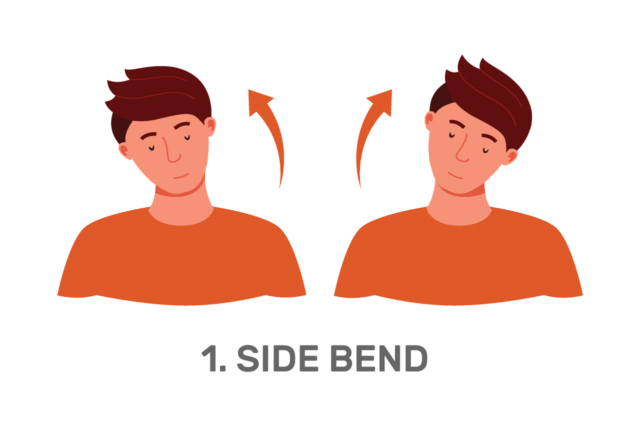It is no secret that exercise is quintessential for pain relief treatment. You have read the studies that show how gentle exercises combined with clinical care can help reduce neck and back pain and improve clinical outcomes.
But how do you get your patients moving when 50% or more of patients struggle with exercise plan compliance?
Read on to learn 5 easy tips for building a home exercise plan into your practice. You can also download 3 free back and neck home exercise handouts below. Use them individually or as a set to encourage movement for healthy muscles, joints, and ligaments.
5 Easy Ways to Incorporate Back and Neck Exercises into Your Practice

The good news is that there is no one-size-fits-all approach to implementing exercises into your home care plan between sessions. Simply follow these easy guidelines.
Remember, these are only guidelines. You can always implement your own expertise and creativity to make it your own.
To get started with home exercises:
1. Assess patients for contraindications for pain management home exercises

Sure, exercise and movement are beneficial for healthy muscles and joints, but some exercises may contribute to further injury. However, there are some risks involved even with simple exercises. For instance, even medical Qi Gong is thought to be risky for people with a history of psychosis or personality disorders; although Qi Gong is considered safe for the average patient.
As a rule, you should advise your patients NOT to push themselves beyond their limit of flexibility or strength. You can modify the exercises according to the patient’s needs, which can also boost your credibility. If you are not sure how to modify the exercises, this is a great chance for you to hone your networking skills.
2. Educate your patients on the benefits of exercise for pain management

One of the greatest tools in your practice is your knowledge. It may seem counterintuitive to you to gently exercise to release and loosen tension and build strength, which can help decrease musculoskeletal pain. However, the general population is prone to a sedentary lifestyle when pain prevails.
This is your chance to gently motivate your patients by explaining the benefits of light exercise for their condition in simple language. You can save the jargon for your colleagues.
You can employ simple motivational interviewing techniques inspired by clinical psychology to encourage the client to exercise.
“MI is a collaborative, goal-oriented style of communication with particular attention to the language of change. It is designed to strengthen personal motivation for and commitment to a specific goal by eliciting and exploring the person’s own reasons for change within an atmosphere of acceptance and compassion.” (Miller & Rollnick)
In brief, you need to find out their goals (e.g., to play with the grandkids, to ride a bike again, etc.) and direct your clients to reach them through change. This is also your chance to problem-solve barriers (e.g., pain, time management, distractions, etc.).
3. Make your home exercise plan fun and realistic

One of the biggest challenges of exercise is the idea of exercise. It means different things to different people. For example, the spiritually inclined yoga enthusiast is not going to be motivated to play ball games.
When suggesting exercises, be sure to take stock of your patients’ physical abilities as well as interests. You can adjust your plan according to the patient’s needs to foster better compliance. Any movement is better than none. So think creatively. (e.g., a patient who hates traditional exercise but loves their dog can incorporate helpful movements into dog play).
4. Demonstrate the home exercises

Demonstrate exercises in your clinic to show how they are performed correctly. If you are busy, you do not have to hold the positions or complete entire sets.
It is also helpful to use videos. If you practice the exercises yourself, you can create how-to videos and share them on your website and social media channels.
If you have patients who do not use social media or the internet, you can play your videos on a television or computer in your office.
The important thing to remember is to show how the movement is done to help build confidence and reduce the chance of injury from incorrect movement.
5. Include handouts with your treatment plans

This is an effortless way to introduce MYCO CLINIC topicals, as well. You can provide a MYCO CLINIC patient brochure in a folder alongside the exercises and treatment suggestions for a professional package.Otherwise, you can invite the patient to use the topicals before and/or after exercise to ease the pain. This could be particularly helpful for the reticent patient discouraged from exercising
Back and Neck Home Exercise Infographics

Back and neck home exercise infographics can help you:
- Generate better patient care
- Improve patient outcomes
- Educate patients on musculoskeletal health
- Increase your credibility and trustworthiness
- And even sell MYCO CLINIC topicals
5 Yoga Postures for Lower Back Pain
 Like Qi Gong, yoga is a mind, body, and spirit practice. This ancient practice was first described in Indian Vedic scriptures, the precursor to Hinduism. The practice was first introduced to the United States in 1883, but grew in popularity in the 1960s. Despite its spiritual origins, it is largely used for fitness, posture correction, and flexibility in the West. One study found that Yoga is more accessible and just as effective as conventional Western strength and flexibility exercises.
Like Qi Gong, yoga is a mind, body, and spirit practice. This ancient practice was first described in Indian Vedic scriptures, the precursor to Hinduism. The practice was first introduced to the United States in 1883, but grew in popularity in the 1960s. Despite its spiritual origins, it is largely used for fitness, posture correction, and flexibility in the West. One study found that Yoga is more accessible and just as effective as conventional Western strength and flexibility exercises.
Qi Gong 8 Brocades (Baduanjin)
 Qi Gong is a Traditional Chinese Medicine (TCM) practice that incorporates mindful movement, meditation, and breathing practices. Baduanjin, or 8 Brocades, is a form of Qi Gong commonly practiced for pain and stress management.
Qi Gong is a Traditional Chinese Medicine (TCM) practice that incorporates mindful movement, meditation, and breathing practices. Baduanjin, or 8 Brocades, is a form of Qi Gong commonly practiced for pain and stress management.
7 Stretches for “Tech Neck” You Can Do Anywhere
 You can thank the technology boom for a sizable portion of your practice. Long hours hunching over computer screens and smartphones is a leading cause of cervical degeneration for healthy people in the 21st century, including children. Kyphosis (neck curvature) and cervical radiculopathy are the typical complaints for teck/text neck.
You can thank the technology boom for a sizable portion of your practice. Long hours hunching over computer screens and smartphones is a leading cause of cervical degeneration for healthy people in the 21st century, including children. Kyphosis (neck curvature) and cervical radiculopathy are the typical complaints for teck/text neck.
Thankfully, the pain can be alleviated and the spine curvature can be improved with exercise, treatment, and better posture practices.
Download 7 Stretches for Tech/Text Neck You Can Do Anywhere Infographic
References
American Psychiatric Association Publishing. (n.d.). Motivational interviewing. Psychiatry online. Retrieved December 1, 2022, from https://psychiatryonline.org/doi/10.1176/appi.books.9781615374809.md44
Chu EC. Preventing the progression of text neck in a young man: A case report. Radiol Case Rep. 2022 Jan 18;17(3):978-982. doi: 10.1016/j.radcr.2021.12.053. PMID: 35106108; PMCID: PMC8784282.
David D, Giannini C, Chiarelli F, Mohn A. Text Neck Syndrome in Children and Adolescents. Int J Environ Res Public Health. 2021 Feb 7;18(4):1565. doi: 10.3390/ijerph18041565. PMID: 33562204; PMCID: PMC7914771.
Dreisinger TE. Exercise in the management of chronic back pain. Ochsner J. 2014 Spring;14(1):101-7. PMID: 24688341; PMCID: PMC3963038.
Gothe NP, McAuley E. Yoga Is as Good as Stretching-Strengthening Exercises in Improving Functional Fitness Outcomes: Results From a Randomized Controlled Trial. J Gerontol A Biol Sci Med Sci. 2016 Mar;71(3):406-11. doi: 10.1093/gerona/glv127. Epub 2015 Aug 22. PMID: 26297940; PMCID: PMC5864160.
Guo Y, Xu MM, Huang Y, Ji M, Wei Z, Zhang J, Hu Q, Yan J, Chen Y, Lyu J, Shao X, Wang Y, Guo J, Wei Y. Safety of Qigong: Protocol for an overview of systematic reviews. Medicine (Baltimore). 2018 Nov;97(44):e13042. doi: 10.1097/MD.0000000000013042. PMID: 30383671; PMCID: PMC6221731.
Leung KW, Yang YJ, Hui SS, Woo J. Mind-Body Health Benefits of Traditional Chinese Qigong on Women: A Systematic Review of Randomized Controlled Trials. Evid Based Complement Alternat Med. 2021 Sep 14;2021:7443498. doi: 10.1155/2021/7443498. PMID: 34567220; PMCID: PMC8457943.
Picha, KJ, Howell, DM. A model to increase rehabilitation adherence to home exercise programmes in patients with varying levels of self-efficacy. Musculoskeletal Care. 2018; 16: 233– 237. https://doi.org/10.1002/msc.1194
Understanding motivational interviewing. Understanding Motivational Interviewing | Motivational Interviewing Network of Trainers (MINT). https://motivationalinterviewing.org/understanding-motivational-interviewing. Accessed October 24, 2022.

